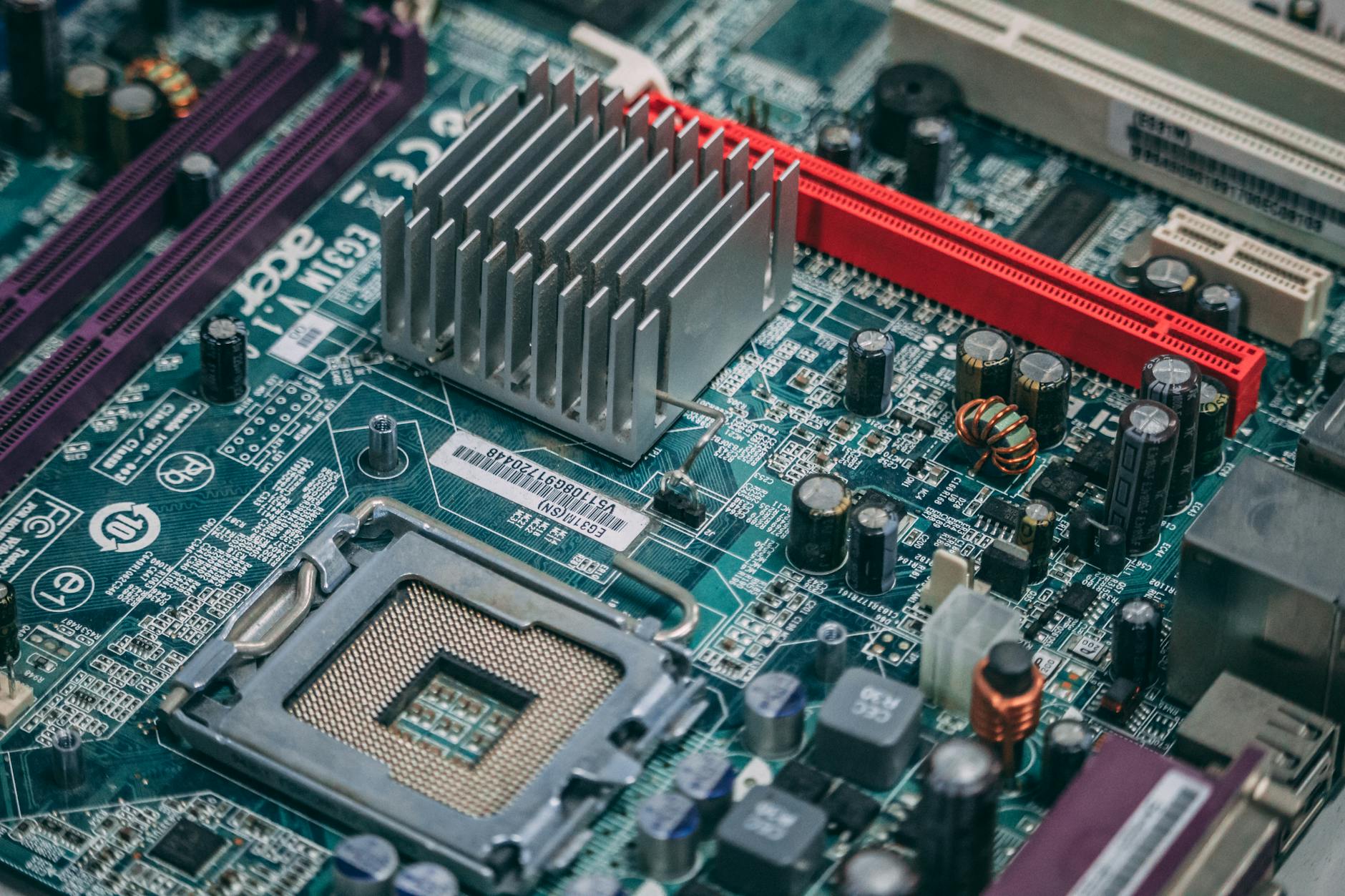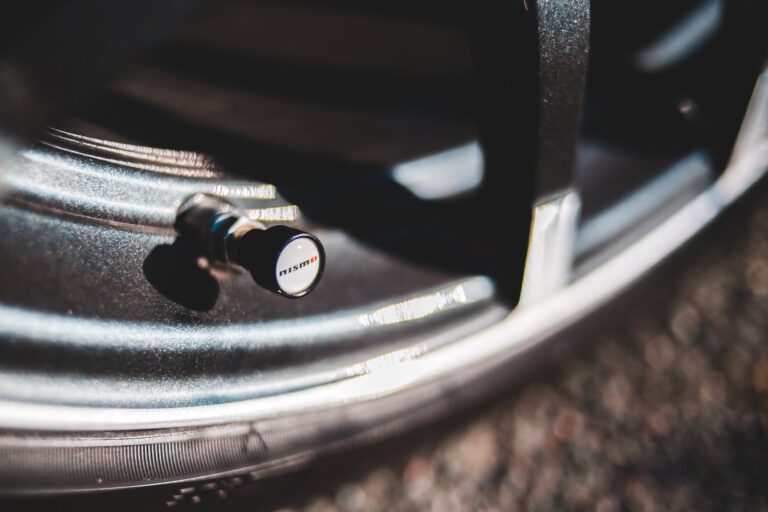Introduction to Brake System Components
Understanding the importance and functionality of brake system components is crucial for maintaining the safety and performance of your vehicle. The brake system is composed of various components that work together to slow down and stop your car effectively. In this section, we will explore the significance of brake system components and provide an overview of their roles.
Understanding the Importance of Brake System Components
The brake system is one of the most critical safety features in any vehicle. Its primary function is to convert the kinetic energy of the moving vehicle into heat energy, allowing the vehicle to slow down and come to a complete stop. This process involves a complex interplay of mechanical and hydraulic components that work seamlessly to ensure reliable braking performance.
By understanding the importance of each brake system component, you can better appreciate how they contribute to the overall braking system’s functionality and safety. It’s essential to recognize that each component plays a specific role in the braking process, and any failure or malfunction can compromise your vehicle’s ability to stop efficiently. Regular maintenance and timely brake services are crucial for identifying and addressing potential issues before they become major concerns.
Overview of Brake System Components
The brake system consists of several key components, each with its specific role in the braking process. Here is an overview of the major brake system components:
| Component | Function |
|---|---|
| Brake Pedal | The driver’s input device that initiates the braking process by applying mechanical force to the brake system. |
| Brake Master Cylinder | Generates hydraulic pressure when the brake pedal is depressed and distributes it to the brake calipers. |
| Brake Lines | Distribute hydraulic pressure from the master cylinder to the brake calipers, allowing for the actuation of the brake system. |
| Brake Calipers | Apply pressure to the brake rotors when hydraulic pressure is received, resulting in the slowing down of the vehicle. |
| Brake Pads | Create friction against the brake rotors, converting kinetic energy into heat energy and slowing down the vehicle. |
| Brake Rotors | Discs that rotate with the wheels and provide the surface for the brake pads to create friction, resulting in the vehicle’s deceleration. |
Understanding the functions of these brake system components is essential for recognizing their role in the overall braking process. By familiarizing yourself with these components, you can better communicate with brake mechanics and make informed decisions regarding brake repair and maintenance.
In the subsequent sections, we will delve deeper into the hydraulic and mechanical components of the brake system, explore different types of brake systems, and discuss advanced brake system technologies. Stay tuned to enhance your understanding of the brake system and make informed decisions about brake system components for your vehicle.
Hydraulic Components of the Brake System
The hydraulic components of the brake system play a crucial role in ensuring effective braking performance. These components work together to convert the mechanical force applied by the driver into hydraulic pressure, which is then distributed to the brake calipers for braking action.
The Brake Pedal: Initiating the Braking Process
The brake pedal is the primary input device that the driver uses to initiate the braking process. When the driver applies pressure to the brake pedal, it activates the brake master cylinder, which generates hydraulic pressure in the brake lines. The brake pedal serves as the link between the driver and the brake system, allowing for precise control over the braking action. For an in-depth look at common issues related to brake pedals, such as a soft brake pedal, refer to our brake services article.
The Brake Master Cylinder: Generating Hydraulic Pressure
The brake master cylinder is a key component of the hydraulic brake system. It converts the mechanical force applied to the brake pedal into hydraulic pressure, which is then distributed to the brake calipers through the brake lines. As the driver presses the brake pedal, a piston inside the master cylinder moves forward, applying pressure to the brake fluid. This pressure is transmitted through the brake lines, initiating the braking action. If you suspect any issues with your brake master cylinder, it is recommended to consult a professional brake mechanic for brake master cylinder repair.
The Brake Lines: Distributing Hydraulic Pressure
The brake lines are responsible for distributing the hydraulic pressure generated by the brake master cylinder to the brake calipers. These lines are made of durable materials that can withstand high hydraulic pressures. They ensure that the pressure is evenly distributed to all the brake calipers, allowing for effective braking. Regular inspection and maintenance of the brake lines, including brake line repair if necessary, are essential for the safe operation of the brake system.
Understanding the hydraulic components of the brake system is essential for maintaining and troubleshooting brake issues. By recognizing the functions of the brake pedal, brake master cylinder, and brake lines, car owners can better comprehend the intricate workings of their vehicle’s braking system. If you are experiencing any signs of brake system issues, such as brake noise or a vibrating brake pedal, it is recommended to seek professional brake services for a thorough inspection and diagnosis of the problem.
Mechanical Components of the Brake System
When it comes to the brake system, the mechanical components play a crucial role in ensuring the safe operation of a vehicle. Let’s explore three important mechanical components: brake calipers, brake pads, and brake rotors.
Brake Calipers: Applying Pressure to the Brake Rotors
Brake calipers are essential components responsible for holding the brake pads in place and applying pressure to the brake rotors to slow down or stop the vehicle. These calipers house the brake pads and play a vital role in converting the hydraulic pressure generated by the brake master cylinder into mechanical force. This force causes the brake pads to clamp onto the brake rotors, creating friction and effectively slowing down the vehicle (Firestone Complete Auto Care).
Brake calipers typically consist of an internal piston that applies pressure to the brake pad, forcing it against the rotor and creating heat. This heat generation is a natural part of the braking process due to the friction between the brake pads and rotors. The calipers must be properly maintained and inspected regularly to ensure optimal performance and safe operation of the braking system.
Brake Pads: Creating Friction for Slowing Down the Vehicle
Brake pads are another crucial component of the braking system. These pads are made of friction material and are responsible for creating the necessary friction to slow down or stop the vehicle. When the brake pedal is pressed, hydraulic pressure is applied to the brake pads, causing them to make contact with the brake rotors. This contact generates friction, resulting in deceleration or stopping of the vehicle.
Brake pads are considered wear items and may need to be replaced periodically, depending on driving habits and conditions. It’s important to monitor the thickness of the brake pads and have them inspected regularly by a qualified technician. Timely replacement of worn brake pads is crucial for maintaining optimal braking performance and ensuring the safety of the vehicle and its occupants.
Brake Rotors: Converting Kinetic Energy into Heat
Brake rotors, also known as brake discs, are attached to the wheels of the vehicle. They work in conjunction with the brake pads to slow down or stop the vehicle by creating friction. As the brake pads clamp onto the rotors, the kinetic energy of the moving vehicle is converted into heat energy. The heat generated during this process is then dissipated into the surrounding air, resulting in the vehicle slowing down or coming to a stop.
Brake rotors need to be in good condition to ensure effective braking performance. Over time, they can become worn or develop uneven surfaces, affecting the braking efficiency. Regular inspection and maintenance of the brake rotors, including resurfacing or replacement when necessary, are crucial for optimal braking performance and safety.
Understanding the functions of these mechanical components is essential for car owners seeking brake services or considering brake system maintenance. It’s important to consult with a qualified brake mechanic for any concerns regarding brake calipers, brake pads, or brake rotors. By ensuring the proper functioning and maintenance of these components, you can enjoy safe and reliable braking performance in your vehicle.
Types of Brake Systems
When it comes to the braking systems in vehicles, there are two main types: disc brakes and drum brakes. While both serve the purpose of slowing down or stopping the vehicle, they differ in functionality and components.
Disc Brakes: Functionality and Components
Disc brakes, typically found on the front wheels of vehicles, consist of several key components. When the brake pedal is pressed, hydraulic pressure is applied to the brake caliper assembly, which houses the brake pads. These brake pads, made of friction material, press against a disc known as the rotor to create the necessary friction to slow down or stop the vehicle. The rotor is securely attached to the wheel hub and rotates along with the wheel.
The advantages of disc brakes include their ability to dissipate heat more efficiently, which reduces the risk of brake fade during prolonged or heavy braking. Disc brakes also provide better braking performance, as they are generally more responsive and provide consistent stopping power. Additionally, disc brakes are typically easier to inspect and service compared to drum brakes.
Drum Brakes: Functionality and Components
Drum brakes, on the other hand, are commonly found on the rear wheels of vehicles. They consist of several components that work together to slow down or stop the vehicle. When the brake pedal is pressed, hydraulic pressure is applied to the wheel cylinders, which in turn pushes the brake shoes against the inner surface of a drum. The drum is attached to the wheel hub and rotates along with the wheel.
The primary advantage of drum brakes is their ability to provide more braking force compared to disc brakes of a similar size. This makes them suitable for the rear wheels, where less braking force is typically required. Drum brakes are also generally more cost-effective and less complex than disc brakes.
It’s worth noting that many vehicles utilize a combination of disc brakes at the front wheels and drum brakes at the rear wheels. This configuration is often employed to optimize braking performance and efficiency, as disc brakes provide superior stopping power at the front while drum brakes offer sufficient braking force at the rear (How a Car Works, Wagner Brake).
Understanding the different types of brake systems and their components is crucial when it comes to brake services and maintenance. Whether your vehicle is equipped with disc brakes or drum brakes, regular inspections and timely repairs or replacements of components such as brake pads, brake rotors, and brake lines are essential for optimal braking performance and safety on the road.
Advanced Brake System Technologies
As automotive technology continues to advance, new and innovative brake system technologies have emerged to enhance braking performance, safety, and efficiency. In this section, we will explore three advanced brake system technologies: Electronic Brake Force Distribution (EBD) systems, Brake-by-Wire systems, and Regenerative Braking systems.
Electronic Brake Force Distribution (EBD) Systems
Electronic Brake Force Distribution (EBD) systems are now commonly used in vehicles to distribute braking force between the front and rear axles, improving stability and control (Motor Trend). Traditional brake systems typically apply the same amount of braking force to all wheels, which may not be optimal in various driving conditions.
EBD systems utilize sensors to monitor various parameters such as vehicle speed, weight distribution, and wheel slip. Based on this data, the system adjusts the braking force applied to each wheel independently. By dynamically distributing the braking force, EBD systems optimize braking performance, especially during emergency stops or when driving on uneven surfaces.
The primary benefits of EBD systems include improved vehicle stability, reduced braking distances, and enhanced overall braking performance. These systems work in conjunction with other safety features such as Anti-lock Braking Systems (ABS) to provide a more controlled and responsive braking experience.
Brake-by-Wire Systems
Brake-by-Wire systems represent a significant technological advancement in brake system design. Unlike traditional hydraulic braking systems, Brake-by-Wire systems eliminate the need for a physical connection between the brake pedal and the brake components (Motor Trend). Instead, these systems rely on electronic sensors and actuators to control the braking process.
When the driver presses the brake pedal in a Brake-by-Wire system, sensors detect the force and transmit an electronic signal to the braking actuators. These actuators then apply the necessary braking force to the wheels. This technology allows for more precise and responsive braking, as well as the integration of additional safety features such as automatic emergency braking.
Brake-by-Wire systems offer several advantages, including improved brake pedal feel, enhanced control, and the potential for advanced driver-assistance features. However, it’s worth noting that these systems require sophisticated electronic components and redundant safety measures to ensure reliability and fail-safe operation.
Regenerative Braking Systems
Regenerative braking systems have gained popularity, particularly in electric and hybrid vehicles, as they contribute to improved fuel efficiency. These systems allow the vehicle to recover energy during braking and convert it into electrical energy, which can be stored for later use (Motor Trend). This energy recovery process reduces reliance on the traditional friction-based braking system, resulting in less wear and tear on brake components.
When the driver applies the brakes in a vehicle equipped with a regenerative braking system, the kinetic energy of the vehicle is converted into electrical energy. This energy is then transferred to the vehicle’s battery for storage. By utilizing this stored energy, the vehicle can power various systems, such as electric motors, reducing the load on the engine and improving fuel efficiency.
Regenerative braking systems offer benefits such as increased range in electric vehicles, reduced brake wear, and a smoother braking experience. However, it’s important to note that these systems may require a period of adjustment for drivers accustomed to the feel of traditional friction-based braking systems.
As automotive technology continues to evolve, these advanced brake system technologies play a significant role in improving braking performance, safety, and efficiency. When considering brake system components for your vehicle, it’s essential to be aware of these advancements and consult with a professional brake mechanic to determine the best options for your specific needs.
Choosing the Right Brake System Components
When it comes to maintaining the safety and performance of your vehicle, choosing the right brake system components is crucial. The brake system components play a critical role in converting the kinetic energy of the vehicle into heat energy to slow down or stop it. Understanding the options available and considering key factors can help you make an informed decision.
Ceramic Brake Pads: Performance and Durability
One option to consider when selecting brake system components is ceramic brake pads. Ceramic brake pads are a high-performance alternative to traditional brake pads. They offer better stopping power and durability, making them an excellent choice for those seeking enhanced braking performance (Motor Trend).
Ceramic brake pads are constructed with a combination of ceramic fibers, non-ferrous filler materials, and bonding agents. This composition allows them to withstand high temperatures and provide consistent braking performance over a wide range of operating conditions. Additionally, ceramic brake pads produce less brake dust compared to other options, helping to keep your wheels cleaner.
However, it’s important to note that ceramic brake pads come at a higher cost compared to traditional brake pads. Consider your driving habits, vehicle type, and personal preferences to determine if the performance benefits of ceramic brake pads outweigh the higher price.
Factors to Consider When Selecting Brake System Components
When choosing brake system components, there are several factors to consider:
-
Driving Conditions: Assess the typical driving conditions you encounter. If you frequently drive in stop-and-go traffic or encounter hilly terrains, you may prioritize components that provide excellent heat dissipation and fade resistance.
-
Vehicle Type: Different vehicle types may require specific brake system components. Factors such as vehicle weight, horsepower, and intended use can influence the selection process. Consult your vehicle manufacturer’s recommendations or seek advice from a trusted mechanic.
-
Cost and Budget: Consider your budget when selecting brake system components. Quality components may come at a higher price, but they can provide enhanced performance and durability. Balance your budget with your desired level of performance and safety.
-
Driving Style: Your driving style can impact the wear and performance of brake system components. If you have an aggressive driving style, you may benefit from components designed for high-performance or heavy-duty applications.
-
Maintenance Requirements: Some brake system components may require more frequent maintenance or replacements than others. Assess the maintenance needs of different components and consider the associated time and cost implications.
Remember, the braking system is a complex assembly of various components, including the brake pedal, brake master cylinder, brake lines, brake calipers, brake pads, and brake rotors. Each component plays a specific role in ensuring safe and reliable braking performance. Consulting with a qualified brake technician or mechanic can provide valuable guidance in selecting the right brake system components for your vehicle.
By carefully considering the factors mentioned above and selecting components that align with your specific needs, you can ensure optimal braking performance and enhance the overall safety of your vehicle. For professional brake services and guidance, you may want to consult a local brake service near me shop.
Maintenance and Care for Brake System Components
Taking proper care of your vehicle’s brake system is essential for ensuring your safety on the road. Regular maintenance and inspections can help identify any potential issues and prevent costly repairs down the line. In this section, we will explore the signs of brake system issues and emphasize the importance of regular brake inspections and service.
Signs of Brake System Issues
Being aware of the signs that indicate potential brake system issues can help you address them promptly and avoid any safety risks. Here are some common signs to watch out for:
-
Squeaky or Grinding Noises: If you hear high-pitched squeaking or grinding noises when applying the brakes, it could be an indication that the brake pads are worn down and need to be replaced. Ignoring these sounds can lead to further damage to the brake rotors, resulting in more expensive repairs.
-
Soft Brake Pedal: A soft or spongy brake pedal that requires excessive pressure to engage the brakes can be a sign of air in the brake lines or a potential brake fluid leak. It’s crucial to have a professional inspect and address this issue promptly to maintain proper brake performance.
-
Vibrating Brake Pedal: If you feel a pulsation or vibration in the brake pedal when applying the brakes, it could indicate warped brake rotors. Warped rotors can affect the effectiveness of braking and should be addressed to ensure safe and smooth stopping.
-
Brake Warning Light: The illumination of the brake warning light on your vehicle’s dashboard is a clear indicator that there is an issue with the brake system. This light could signal anything from low brake fluid levels to a malfunctioning sensor. It’s essential to have the system inspected to identify and resolve the underlying problem.
If you notice any of these signs or other abnormalities with your brakes, it’s important to have them checked by a qualified professional. Prompt attention to brake system issues can help prevent accidents and maintain the overall performance of your vehicle. For convenient brake services, you can search for a reputable brake service near you.
Importance of Regular Brake Inspections and Service
Regular brake inspections and servicing are crucial for maintaining the optimal performance of your vehicle’s brake system. Here’s why it’s important to make brake maintenance a priority:
-
Safety: The brake system components play a critical role in the overall safety of your vehicle. Regular inspections and servicing help ensure that all components, including the brake pads, brake rotors, and brake calipers, are in proper working condition. This allows for efficient braking and reduces the risk of accidents.
-
Preventive Maintenance: Regular brake inspections can detect potential issues before they escalate into major problems. Timely identification of worn brake pads, leaking brake lines, or damaged brake rotors can prevent further damage and costly repairs. It’s recommended to have your brakes inspected at least once a year or as recommended by your vehicle’s manufacturer.
-
Extended Brake System Lifespan: Routine maintenance, such as brake fluid flushes and brake pad replacements, can help extend the lifespan of your brake system components. By keeping the components in good condition, you can avoid premature wear and ensure optimal performance for a longer period.
-
Peace of Mind: Knowing that your brake system is in good working order provides peace of mind while driving. Regular inspections and servicing allow you to have confidence in your vehicle’s braking capabilities, especially during critical situations where quick and reliable stopping is essential.
To ensure your vehicle’s brake system receives the care it needs, it’s recommended to schedule regular brake inspections and service with a qualified brake repair shop. A skilled brake mechanic can assess the condition of your brakes, perform necessary repairs or replacements, and provide expert advice on maintaining optimal brake performance.
Remember, your safety and the safety of others on the road depend on well-maintained brake system components. Don’t overlook the importance of regular brake maintenance and inspections to keep your vehicle stopping smoothly and reliably.







